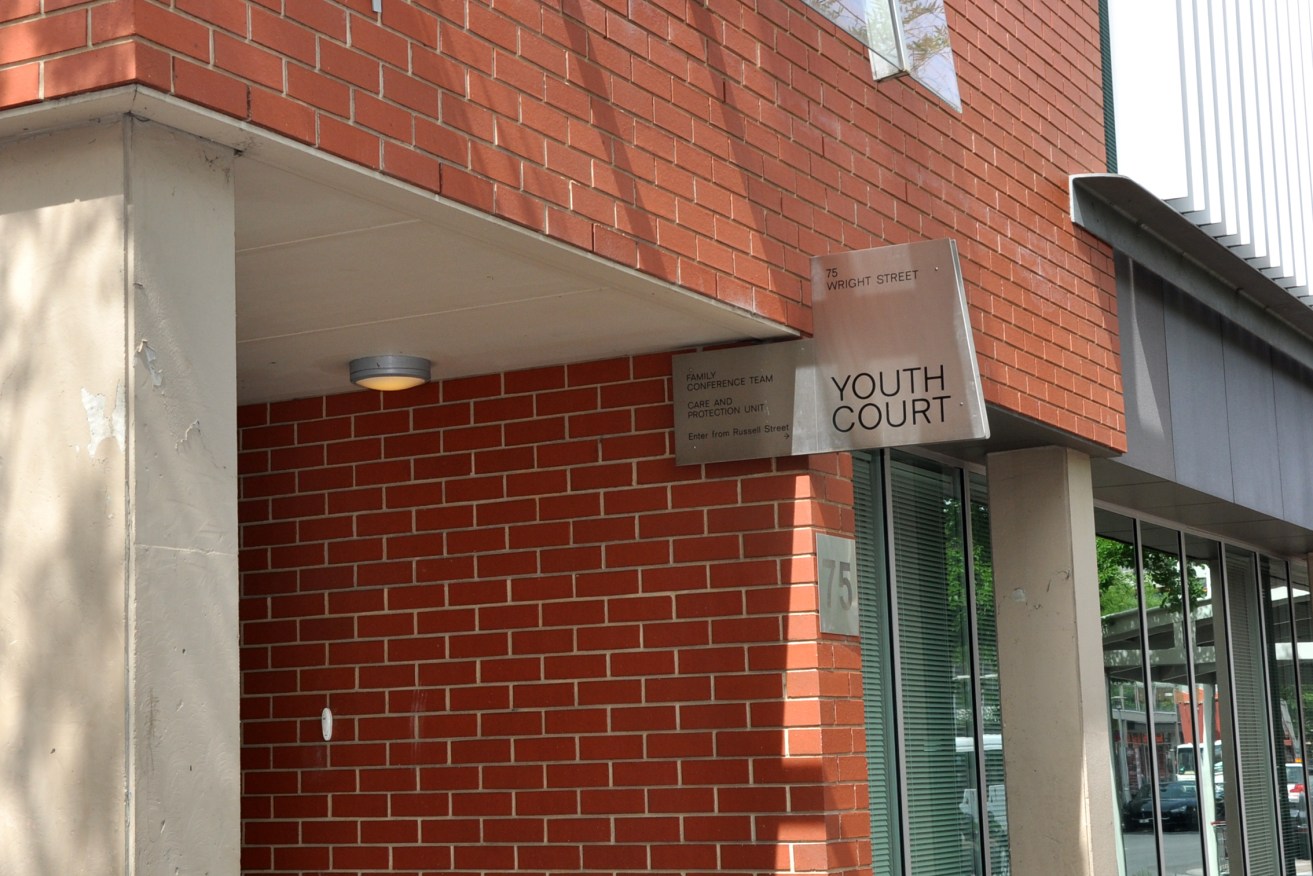“Disturbing” rate of SA Aboriginal children sent to court
Aboriginal children who are accused of committing crimes are more likely than ever before to be sent to court compared with their non-Indigenous counterparts, with the state’s youth justice watchdog saying she is “deeply concerned” by the “different treatment”.

Adelaide Youth Court. Photo: AAP/Tim Dornin
A report released yesterday by Training Centre Visitor Penny Wright shows SA Police sent over three-quarters – 76.7 per cent – of alleged Aboriginal youth offenders to court last financial year – the highest rate since record keeping began in 2008.
Over the same time, less than half of alleged non-Aboriginal youth offenders – 44.4 per cent – were sent to court, which is the lowest rate ever recorded.
The statistics show alleged non-Aboriginal child offenders are more likely be diverted from court through formal cautions, drug treatment or assessment, or family and community conferences than their Aboriginal counterparts.
Advocates argue court diversions such as cautioning and conferences are preferable as they are less costly, time-consuming and stressful than sending a child through the court system.
Diversions also lead to less children being sentenced and detained.
Wright told InDaily she was “deeply concerned” that Aboriginal children appeared to be receiving “different treatment” from non-Aboriginal children when SA Police manage an alleged offence.
“It is critical to have this kind of public discussion, to make sure this information is on the public record,” she said.
“We have to remember that behind these data are individual children and young people who have hopes and desires for the future.
“The standards we walk past are the standards we accept.”
Wright said she didn’t know why the gap between Aboriginal and non-Aboriginal children being sent to court was at its widest since record keeping began.
“I haven’t been able to find any current or conclusive research to help me understand the cause,” she said.
“I can’t find evidence which justifies the lower rate of diversions given to Aboriginal children and young people who are alleged to have committed an offence.
“That must raise the question whether systemic biases are contributing to this problem although I am hesitant to point any fingers until I understand the whole picture.”
Opposition human services spokesperson Nat Cook said the statistics, which were compiled from Report on Government Services data, were “disturbing and warrants further investigation”.
“We know the more contact children have with the justice system, the more likely they are to offend later in life,” she said.
“If we can support these vulnerable kids safely in their communities, we must.”
But Wright’s report showed South Australia was “well on its way” to meeting the Closing the Gap target of a 30 per cent reduction of Aboriginal children in detention by 2031.
Last financial year, South Australian Aboriginal children and young people were 22 times more likely to be in detention than non-Aboriginal children, which was a reduction on last year’s figure.
Wright said it was “very encouraging” to see fewer Aboriginal children coming into detention and South Australia should impose a more ambitious target.
“We should aim even higher, especially when we consider the significant cost of detention, at 32 times more each day than community supervision,” she said.
“When you realise that almost all the children and young people held in detention in SA have not been convicted but are on remand, it’s clear this cost would be much better spent on culturally safe early intervention and more diversion and development programs.”
In a statement to InDaily, a SA Police spokesperson said officers were obliged to comply with the requirements of the Young Offenders Act when considering whether a young person was suitable for a diversion from court.
“SAPOL continually works with other agencies to ensure appropriate matters are diverted to achieve the best outcome for the community and the youth,” the spokesperson said.
“If a matter is before the court, SAPOL will always consider the option of diversion as a possible outcome.”
Wright said she would be “making some inquiries of the police” to find out why officers were more likely to send Aboriginal children to court.
“I urge the SA government to take immediate action if we are to end this cycle of Aboriginal people being overrepresented in our prisons, which has its origins in the youth justice system,” she said.




